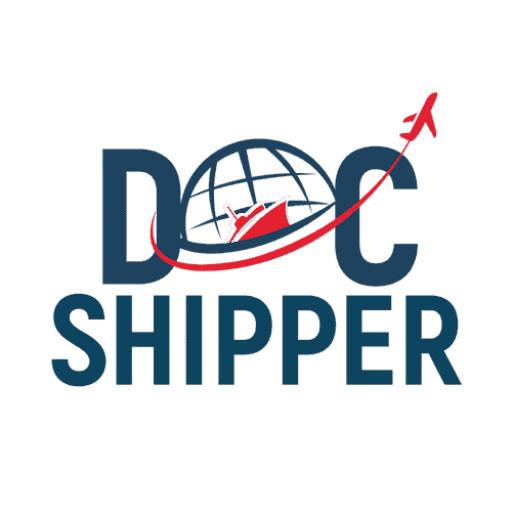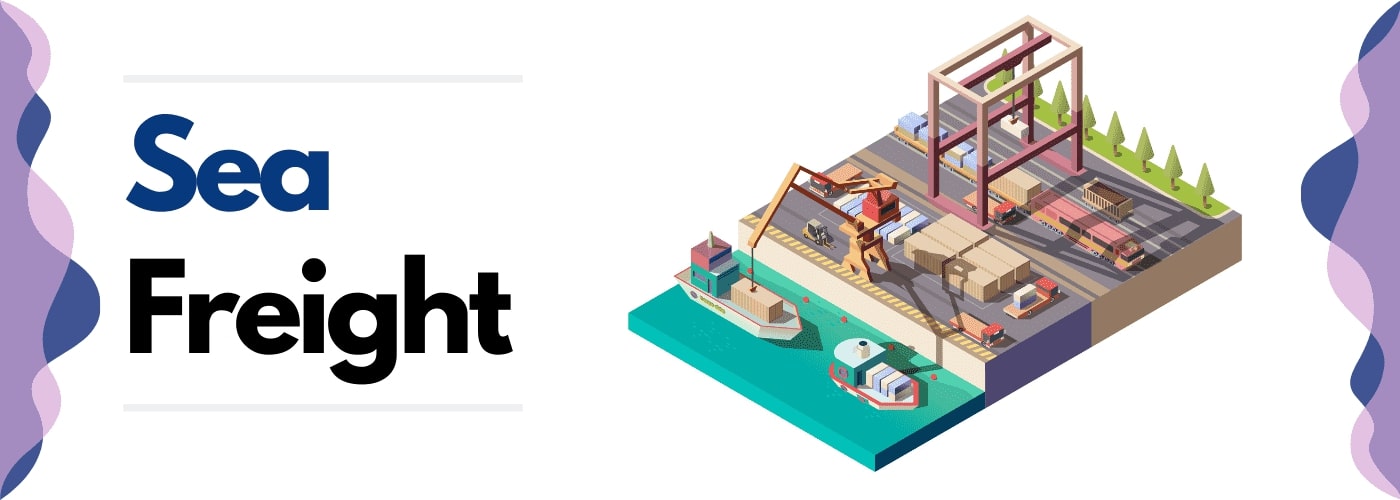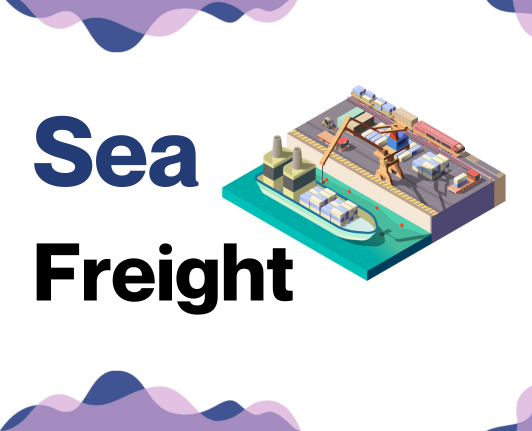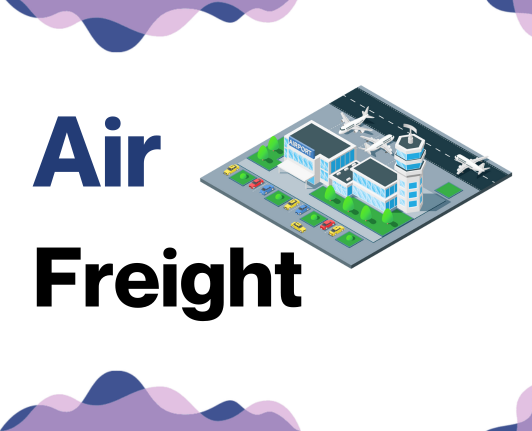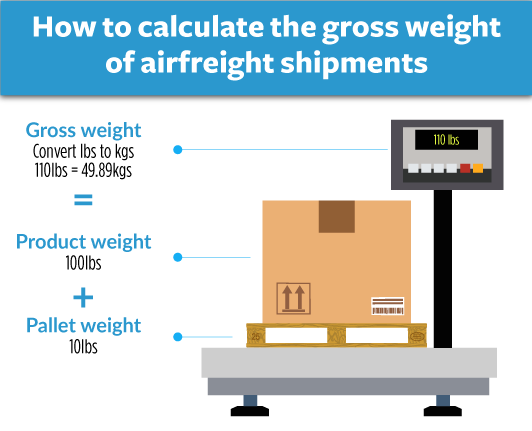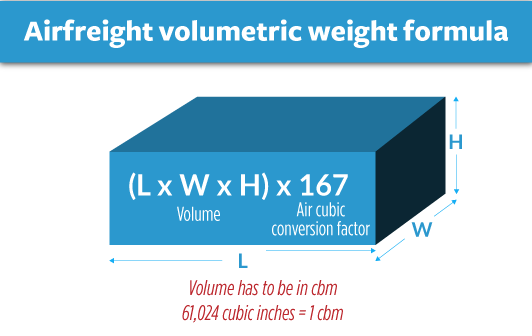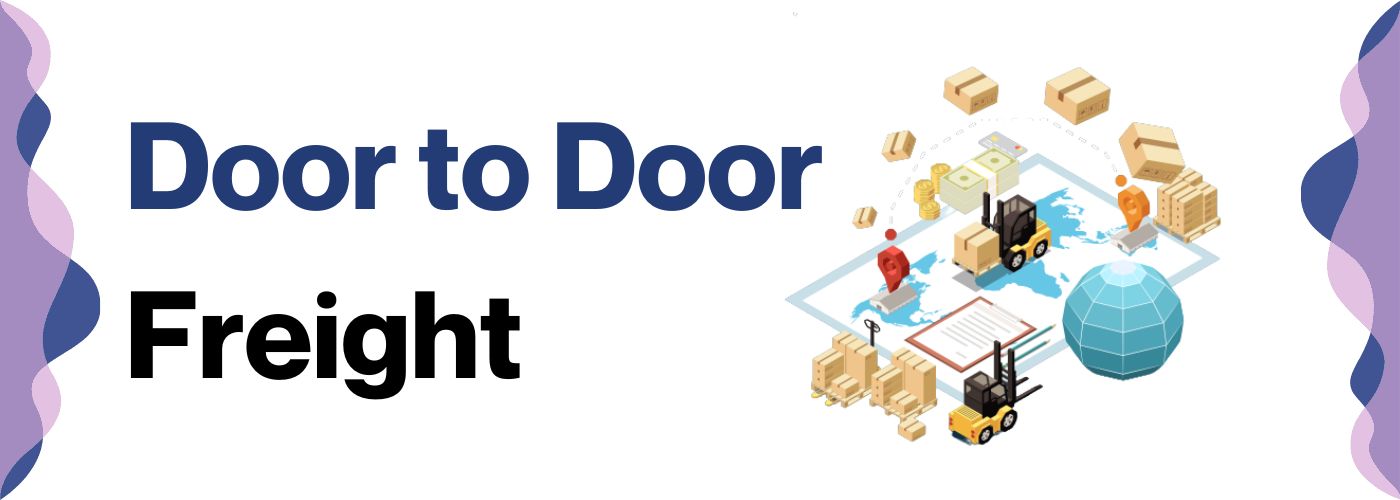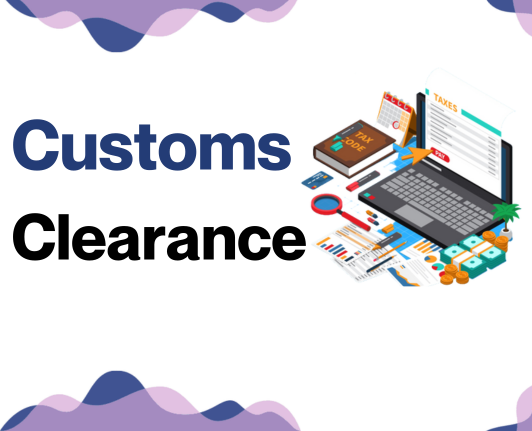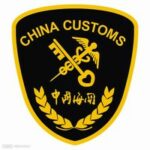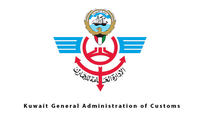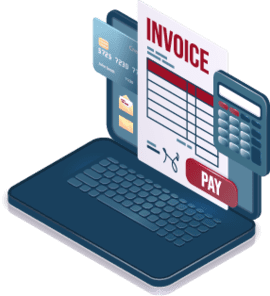Who knew moving goods from China to Kuwait could be as complex as trying to win a ping-pong match against a robot? Unraveling the labyrinth of freight rates, transit times, and local customs regulations can indeed be a complex task.
This destination guide takes you on a journey from point A to B, explaining in detail the different freight options, painting a clear picture of the customs clearance process and giving explicit advice on duties and taxes. If the process still feels overwhelming, let DocShipper handle it for you! As an international freight forwarder, we streamline every step of your shipping process, turning baffling challenges into smooth successes for your business.
Which are the different modes of transportation between China and Kuwait?
Shipping goods from China to Kuwait involves crossing continents and seas. It's like planning a grand tour for your products, balancing speed, cost, and safety. Ground transport might face roadblocks—literally! Sea freight offers its own charm, being cost-effective but slower. Air freight, on the other hand, is like a bullet train, fast but pricey. What's the best way, you ask? It hinges on your needs. Are you in a hurry, or is budget your concern? Your choice of transport is your wand, shaping your shipping journey. We're here to help you become the magician of your transport story.
How can DocShipper help?
Shipping goods between China and Kuwait can feel like a daunting task, but at DocShipper, we make it simple. We coordinate every step from arranging transport to clearing customs. At a loss? Our consultants are ready to assist, free of charge. Need a quick estimate? We'll get it to you in less than 24 hours. So, why wait? Contact us now!
DocShipper Tip: Sea freight might be the best solution for you if:
- You are shipping large volumes or bulky items, as sea freight offers the most space at a cost-effective rate.
- Your cargo doesn't have an urgent deadline, as sea freight typically has longer transit times compared to air or rail.
- Your shipping routes are between major ports, allowing you to leverage the extensive global network of sea shipping lanes.
Sea freight between China and Kuwait
Embarking on the maritime journey between China and Kuwait opens up a world of high-volume trade potential. The vast China-Kuwait sea network, connecting critical ports such as Guangzhou and Shuwaikh, lays the pathway for thriving commerce. While the ocean might seem vast, the upside is sea freight's cost-effectiveness, particularly for bulky shipments.
But all isn't smooth sailing as the sea freight process can be a labyrinth, with countless shippers bobbing over waves of confusion. Errors lurking under the surface could sink an otherwise fruitful shipping venture. Tackling the unpredictable sea of customs clearance or perfecting the art of paperwork — these tasks can be as daunting as navigating the high seas during a monsoon storm.
You're not alone on this expedition. Our detailed guide is like your compass, helping you chart the course with ease. Hold tight as we set sail through the choppy waters of best practices and crucial specifications, ensuring your sea freight venture remains buoyant. So tighten your lifebelt, your smoother sailing guide awaits ahead!
Main shipping ports in China
Port of Shanghai
Location and Volume: Located on the east coast of China at the mouth of the Yangtze River, the Port of Shanghai is a transport hub for the bustling city of Shanghai, with a shipping volume of 47.3 million TEU.
Key Trading Partners and Strategic Importance: The port has established international shipping connections with over 500 ports in 214 countries worldwide. Serving as Asia's leading port, it plays a valuable role in China's economic growth as it facilitates a vast amount of international trade.
Context for Businesses: If you're expanding into the Asian market, the Port of Shanghai provides advantageous access to a dynamic economy and is well-equipped for large-scale cargo handling.
Ningbo-Zhoushan Port
Location and Volume: Situated in the northeastern Zhejiang province, the Ningbo-Zhoushan Port is the world's largest port by cargo tonnage, boasting a shipping volume of 15 million TEUs per year.
Key Trading Partners and Strategic Importance: Over 560 ports among more than 90 countries and regions have direct shipping links with Ningbo-Zhoushan. The port plays a strategic role in China's Belt and Road Initiative and is significant in domestic coal transportation.
Context for Businesses: Ningbo-Zhoushan Port is a smart choice if you deal with heavy cargo loads and want to bolster trading links with the central and eastern regions of China.
Port of Shenzhen
Location and Volume: Based in Guangdong Province, it consists of numerous ports and harbors along 260 km of the province's coastline, with a shipping volume of 13.5 million TEU.
Key Trading Partners and Strategic Importance: Shenzhen Port interacts with more than 300 ports from over 100 countries. It's a critical port for economic exchanges between Guangdong Province and international destinations.
Context for Businesses: Looking to diversify supply chains and target South China's burgeoning consumer market? The Port of Shenzhen can open up these opportunities.
Port of Guangzhou
Location and Volume: Found at the heart of the Pearl River Delta, it is one of China's busiest transport hubs with a shipping volume of 25.5 million TEU.
Key Trading Partners and Strategic Importance: The port holds robust trading ties with over 450 international ports across 100 countries. Its strategic importance is accentuated by its role as a key node in the Maritime Silk Road.
Context for Businesses: Want to tap into southeast China's affluent manufacturing sector? Importing or exporting via the Port of Guangzhou directly connects your business to this hot-spot.
Port of Qingdao
Location and Volume: Located in Shandong Province, it ranks among the world's largest ports, with a shipping volume of 18.5 million TEU.
Key Trading Partners and Strategic Importance: It maintains strong trading relationships with ports in 700 cities from over 180 countries. It's highly influential in China's Belt and Road Initiative and serves as a comprehensive logistics hub in Northern China.
Context for Businesses: Exporting agricultural goods or importing valuable resources for manufacturing? The Port of Qingdao's unique geographic location and diversified business focus can help extend your reach.
Port of Tianjin
Location and Volume: Located northeast of Beijing on the western shore of the Bohai Bay, this port recorded a shipping volume of 21 million TEU.
Key Trading Partners and Strategic Importance: The port links with over 500 ports spread across 180 countries, serving as a critical North China gateway that supports the Belt and Road Initiative.
Context for Businesses: Connecting with Northern China's massive manufacturing and consumer markets is more viable with the Port of Tianjin, especially if your business deals in metal ores, automobiles, or machinery imports/exports.
Main shipping ports in Kuwait
Port of Shuwaikh
Location and Volume: Shuwaikh is found on the south shore of Kuwait Bay area and serves as the primary port for the capital city. This urban port holds the record for being the key commercial hub, boasting a shipping volume of around 697,000 TEU.
Key Trading Partners and Strategic Importance: The Port of Shuwaikh entertains substantial trade relations with countries like China, India, U.S.A., U.A.E., and Saudi Arabia. Owing to its strategic location and massive onshore development projects, it plays a critical role in Kuwait’s global trade and exports.
Context for Businesses: If you're seeking to reach international markets with competitive shipping routes, the Port of Shuwaikh could be an excellent choice. Thanks to its convenient location and profound infrastructure, it offers smooth and quick transit times for various types of cargo.
Port of Shuaiba
Location and Volume: Situated about 45 kilometers south of Kuwait City, Shuaiba is the second key seaport in the country specializing in container shipment with an impressive shipping volume of approximately 799,000 TEU.
Key Trading Partners and Strategic Importance: Some of the major trading partners include neighboring Middle Eastern countries and Asian powerhouses like India and China. The port is strategically important for the oil, petrochemical, and manufacturing industries.
Context for Businesses: For those in the energy or manufacturing sectors looking to ship goods, the Port of Shuaiba may provide the strategic advantage you need, due to its proximity to major industrial areas and tailored facilities for energy-related cargo.
Port of Doha
Location and Volume: Nestled on the eastern coast of Kuwait, up north, Doha is a smaller port with a calm, safe harbor. Its shipping traffic is not as high as the previous ones yet plays a pivotal role for specific trade categories with a shipping volume of around 5 million TEU.
Key Trading Partners and Strategic Importance: It serves as an important link in the trade network with many Gulf countries. Its strategic importance lies in the thriving fishing industry and the up-and-coming tourism sector.
Context for Businesses: The Port of Doha is particularly useful if your business rests in the fishing, leisure, or tourism sectors. With the development of new waterfront projects, it's an emerging hub integrating trade and tourism.
Should I choose FCL or LCL when shipping between China and Kuwait?
When shipping goods between China and Kuwait, choosing between Full Container Load (FCL) and Less than Container Load (LCL) can significantly affect your business. This decision will influence your overall shipping cost, delivery time, and even the success of your shipment. In the next sections, we'll explore the pros and cons of both options. By the end of it, you'll be able to make the most practical and cost-effective decision for your freight needs. Let's dive in!
LCL: Less than Container Load
Definition: LCL or Less than Container Load shipping involves sharing container space with other goods. This is an attractive option for cargos that don't require a full container and a top choice for achieving savings and flexibility.
When to Use: If your shipment is between 13 and 15 CBM (cubic meters) or lesser, an LCL shipment is an ideal choice. You don't have to wait to fill a container, making it perfect for low volume shippers who need flexibility in their supply chain.
Example: Take a business that needs to import 10 CBM of electronic parts from Suzhou, China, to Kuwait City - this is a classic example where LCL freight would justifiably be the economical and logical choice of transport.
Cost Implications: Although LCL freight might seem more expensive per unit than Full Container Load (FCL), remember that you're only paying for the space you use. Especially when dealing with smaller quantities of goods, it proves more cost-effective as you're not wasting money on unused container space. However, it's crucial you factor in the potential for additional handling charges at the cargo consolidation and deconsolidation stages.
FCL: Full Container Load
Definition: FCL or Full Container Load shipping involves transporting goods in a container that is solely dedicated to your cargo, offering increased security and cost-efficiency for bulk shipments. In general terms, the FCL container can be a 20'ft or a 40'ft container, filled to capacity by your items alone.
When to Use: You should consider FCL shipping when your cargo volume exceeds approximately 14 CBM, as it is most cost-effective for high-volume shipments. Not only does this option offer you a better fcl shipping quote but it also adds an extra layer of security as the container content is sealed at the origin and isn't opened until it reaches the destination.
Example: Think about a furniture manufacturer in China shipping a large quantity of chairs and tables to a retailer in Kuwait. Given the substantial quantity, they would benefit from renting an entire 20'ft or 40'ft FCL container to securely and cost-effectively transport their products.
Cost Implications: Opting for FCL means your shipping costs are not derived from the weight or size of the items, but from a flat rate per container. Even though the upfront costs might appear higher, for large shipments it usually turns out to be cheaper than shipping the same volume with multiple LCL (Less than Container Load) shipments.
Unlock hassle-free shipping
Struggling to choose between consolidation and a full container for shipping from China to Kuwait? Allow DocShipper to simplify this decision for you! Our experts analyze critical factors such as cargo size, freight rates, and delivery deadlines to identify the ideal ocean freight solution for your business. Wave goodbye to the stress of shipping! Contact us today for a free estimation and experience cargo transport, the hassle-free way.
How long does sea freight take between China and Kuwait?
Sea freight between China and Kuwait typically takes roughly between 15 to 45 days, depending on several details. Transit times heavily depend on factors such as the specific ports in use, as well as the weight and nature of the procured goods. For a detailed estimate tailored to your specific needs, it's recommended to consult with a freight forwarder, like DocShipper.
In terms of transit times from various major ports, below you'll find a standard table:
| From (China) | To (Kuwait) | Average Transit Time (days) |
| Shanghai | Shuwaikh | 25 |
| Shenzhen | Shuwaikh | 20 |
| Guangzhou | Shuwaikh | 22 |
| Tianjin | Shuwaikh | 26 |
*Please note: The average transit time is given as a rough guideline and may vary. For the most accurate information, please contact a company like DocShipper for a tailored quote.
How much does it cost to ship a container between China and Kuwait?
Deciphering ocean freight rates can be quite a task with the shipping cost swinging widely for container shipments from China to Kuwait. Your shipping costs per CBM could range vastly, with variables like Point of Loading, Point of Destination, the carrier used, the nature of the goods, and even monthly market fluctuations playing crucial roles. An exact quote on the spot is near impossible, yet fear not! Our shipping specialists are wizards in creating cost-effective, customized solutions tailored to your specific needs. Remember, we quote on a case-by-case basis, ensuring you receive top-notch service with the best rates. Jump aboard!
Special transportation services
Out of Gauge (OOG) Container
Definition: An Out of Gauge (OOG) container is a shipping option specifically designed for cargo that doesn't conform to standard dimensions. These containers come with flat racks or open tops to accommodate oversized items.
Suitable for: Ideal for heavy machinery, industrial equipment, large statues or artwork, and other out of gauge cargo that exceeds the size specifications of standard containers.
Examples: An industrialist shipping a large piece of machinery or an artist shipping an oversized sculpture would benefit from an OOG container.
Why it might be the best choice for you: If your business involves goods that cannot fit into standard containers due to their irregular size or shape, OOG containers are your go-to solution. They guarantee the safe and secure shipment of your precious cargo from China to Kuwait.
Break Bulk
Definition: Break bulk shipping involves transporting cargo as separate, loose items rather than containerizing them. It employs various methods, such as bags, drums, pallets, or crates to organize and secure items during transit.
Suitable for: Perfect for goods that are difficult to containerize like steel beams, wood, machinery parts, or other bulky items.
Examples: If your business involves shipping large equipment parts from China to Kuwait, break bulk may be the superior choice.
Why it might be the best choice for you: If you deal with non-containerized cargo, break bulk shipping can offer a reliable and flexible alternative, specially tailored to handle the unique demands of your cargo.
Dry Bulk
Definition: Dry bulk shipping involves the transportation of homogeneous, loose cargo loads such as coal, grain, or minerals in large quantities.
Suitable for: Ideal for businesses related to agriculture, mining, or construction industry exporting from China to Kuwait.
Examples: Suppose you're in the coal mining industry and require to export a substantial amount of coal from China to Kuwait. In that case, dry bulk shipping is your most efficient choice.
Why it might be the best choice for you: Handles large volumes of unpackaged goods efficiently, optimal for industries dealing with raw materials.
Roll-on/Roll-off (Ro-Ro)
Definition: Roll-on/Roll-off (Ro-Ro) shipping involves wheeled cargo, like cars, trucks, trailers, or railroad cars, rolled on and off a specialized Ro-Ro vessel.
Suitable for: Best suited for self-propelled or towable machinery and vehicles.
Examples: If you're in the business of exporting cars or tractors from China to Kuwait, Ro-Ro is a safe and efficient shipping method.
Why it might be the best choice for you: If you’re shipping any form of wheeled machinery or vehicles, Ro-Ro shipping ensures your cargo is safely driven on and off the ship, minimizing the need for complex cranes or cargo handling.
Reefer Containers
Definition: Reefer containers are refrigerated shipping containers designed to transport temperature-sensitive cargo.
Suitable for: Ideal for food industry businesses, pharmaceutical companies or any other company that needs temperature-controlled transportation.
Examples: If you're a company exporting perishable goods like fruits, vegetables, or pharmaceuticals from China to Kuwait, reefer containers ensure your product arrives in peak condition.
Why it might be the best choice for you: If your cargo requires specific temperature conditions during transit, opting for reefer containers guarantees your goods arrive in excellent condition, irrespective of the weather during transit.
Every business has unique shipping requirements, and at DocShipper, we are committed to helping you make the right choice. Need more advice or looking for a reliable freight forwarding partner? Contact us for a free shipping quote in less than 24 hours.
DocShipper Tip: Air freight might be the best solution for you if:
- You are in a hurry or have a strict deadline requirement, as air freight offers the fastest transit times.
- Your cargo is less than 2 CBM (Cubic Meter), making it more suitable for smaller shipments.
- Your shipment needs to reach a destination that is not easily accessible by sea or rail, allowing you to tap into the extensive network of global airports.
Air freight between China and Kuwait
Choosing air freight for your shipments from China to Kuwait maximizes speed and reliability, particularly effective for small, yet high-value items - think electronics or designer clothing. Picture a flash fast-forwarding your goods across continents, where time is crucial. However, some shippers get tripped up over common pitfalls like pricing errors. Think of it as using the wrong recipe for your favorite dish - the results won't match your expectations. Using incorrect weight formulas, or lack of knowledge of cost-saving practices could skyrocket your expenses. By focusing on these nuances, later in this guide, we'll ensure you sidestep these usual missteps and master the art of air freight.
Air Cargo vs Express Air Freight: How should I ship?
Packing up your goods and wondering if Air Cargo or Express Air Freight is your ticket from China to Kuwait? It's simple: Think of Air Cargo as booking a seat in a commercial airline - cheaper but may take a tad longer, while Express Air Freight is like having your own charter plane - pricier, but speedy and direct. Now, which fits your pace and pockets better? Dive into this guide to help you make a strategic shipping decision.
Should I choose Air Cargo between China and Kuwait?
Choosing air cargo for shipping between China and Kuwait can be a cost-effective and reliable option. Airlines such as China Southern Airlines and Kuwait Airways are prominent choices in these regions, offering robust cargo services. Both airlines maintain scheduled cargo flights, which, while ensuring regularity and dependability, can result in longer transit times. Yet, if you're shipping cargo weighing between 100 to 150kg (220lbs to 330lbs), the cost-effectiveness of air cargo becomes more attractive. Your budgetary needs might align well with this solution. Review China Southern Airlines and Kuwait Airways here to learn more about their freight services.
Should I choose Express Air Freight between China and Kuwait?
Choosing express air freight, a fast and reliable service provided by esteemed courier firms like FedEx, UPS, or DHL, could benefit businesses in need of swift shipment. Well-suited for transporting smaller cargo amounts under 1 CBM or 100/150 kg (220/330 lbs), this method employs dedicated cargo planes without passenger interference, promising facilitates speedy and direct shipments. So, if you're shipping high-value goods or need expedited delivery between China and Kuwait, this might be an optimal choice.
Main international airports in China
Beijing Capital International Airport
Cargo Volume: Handles over 1.96 million metric tonnes annually.
Key Trading Partners: Key destinations include United States, Japan, South Korea, Australia, and Germany.
Strategic Importance: Beijing Capital International Airport is China's busiest and most important, strategically situated in the nation's capital.
Notable Features: Equipped with world-class cargo facilities, it has a dedicated terminal for cargo operations which facilitates efficient handling.
For Your Business: If your business often ships to or from North East Asia and the Pacific region, integrating Beijing Capital International Airport into your shipping strategy may maximize your logistics efficiency.
Shanghai Pudong International Airport
Cargo Volume: The airport handles over 3.1 million metric tonnes of cargo every year.
Key Trading Partners: Main trading partners are from the USA, Japan, South Korea, Germany, and Australia.
Strategic Importance: Shanghai Pudong was purposely built for cargo, making it China's largest air-freight hub.
Notable Features: Shanghai Pudong boasts two cargo areas, both equipped with automated storage and retrieval systems.
For Your Business: With its vast scale and sophisticated infrastructure, this hub is worth considering if your cargo requires conex containers or efficient transition on its journey to or from China.
Guangzhou Baiyun International Airport
Cargo Volume: Carrying over 2 million metric tonnes of cargo annually.
Key Trading Partners: Most cargo is traded with the United States, Australia, Japan, South Korea and Germany.
Strategic Importance: Located in the Pearl River Delta, one of China's leading economic regions, making it a significant hub for cargo transport.
Notable Features: Hosts one of the largest air cargo centers in China, with state-of-the-art facilities.
For Your Business: If your business deals with high-tech products, perishables, or valuable cargo, Guangzhou Baiyun's superior handling facilities can be a game-changer.
Hong Kong International Airport
Cargo Volume: Handles an astounding 4.2 million metric tonnes annually, one of the world's busiest.
Key Trading Partners: Major partners include the United States, Taiwan, Japan, Singapore, and Germany.
Strategic Importance: Positioned as the gateway to mainland China and a convenient hub for intercontinental flights.
Notable Features: The airport is renowned for its urgent and express cargo handling facilities.
For Your Business: If timely delivery is of utmost importance to your business, utilizing Hong Kong International Airport's expedited cargo services could give you the edge.
Chengdu Shuangliu International Airport
Cargo Volume: The airport manages over 221,000 metric tonnes each year.
Key Trading Partners: Prime partners include Japan, Australia, the United States, and several European countries.
Strategic Importance: As the pivotal aviation hub for Western China, Chengdu Shuangliu is a strategic choice for businesses targeting the western Chinese market.
Notable Features: This airport has a dedicated cool-chain cargo terminal, specialized for fresh and perishable goods.
For Your Business: If your business deals with perishable or temperature-sensitive cargo, tapping into Chengdu Shuangliu's cool chain services can help you ensure the quality of your goods on arrival.
Main international airports in Kuwait
Kuwait International Airport
Cargo Volume: With an annual freight volume of over 200,000 metric tons, this airport plays a crucial role in the international freight trade network.
Key Trading Partners: Its critical commerce routes include countries within the Middle East, as well as China, India, Europe, and the United States.
Strategic Importance: Positioned in a strategic location in the Middle East, it serves as an ideal cargo hub for the Gulf Cooperation Council (GCC) countries and beyond.
Notable Features: The airport boasts a dedicated cargo terminal, a comprehensive freight village, and state-of-the-art cargo handling equipment. There is also a direct road access, facilitating speedy dispatch and delivery of cargo.
For Your Business: If your company frequently handles trade within the Middle East or the aforementioned regions, utilizing the Kuwait International Airport could provide efficient and well-connected logistics solutions for your air freight consignments.
How long does air freight take between China and Kuwait?
The average air freight shipping time between China and Kuwait typically ranges from 3 to 5 days. However, transit times aren't uniform—they depend on various factors, from the specific airports involved to the weight and type of your cargo. To get the most accurate shipping duration for your specific needs, it's recommended to consult with a freight forwarding expert like DocShipper.
How much does it cost to ship a parcel between China and Kuwait with air freight?
Air freight costs between China and Kuwait can significantly vary, typically ranging from $3 to $8 per kg. An exact amount is elusive due to dynamic factors such as distance from airports, parcel dimensions, weight, and nature of goods. A tailored quote is the best approach as every shipment has its unique specifics. Rest assured, our expert team is dedicated to offering you the most competitive rates. In fact, we provide free quotes on a case-by-case basis within 24 hours. Ready to get started? Contact us and receive yourquote in less than 24 hours.
What is the difference between volumetric and gross weight?
In the world of shipping, you'll encounter two key terms: gross weight and volumetric weight. The gross weight refers to the actual weight of your shipment, including any packaging or pallets. The volumetric weight, also known as dimensional weight, estimates the package's weight based on its size.
Now, how do we calculate each? In Air Cargo, the volumetric weight is calculated by multiplying the package's dimensions (length x width x height in centimeters) and dividing the result by 6000. For example, if your package measures 50cm x 40cm x 30cm, its volumetric weight would be (50 x 40 x 30) / 6000, resulting in 10kg or roughly 22lbs.
Express Air Freight applies a similar technique but with a different divisor, typically 5000. Using the same package dimensions, you get (50 x 40 x 30) / 5000, giving you a volumetric weight of 12kg or 26.46lbs.
It's crucial to understand both concepts because freight charges hinge on them. Shippers charge based on whichever weight is higher, whether gross or volumetric. Therefore, understanding these terms allows you to anticipate your shipping costs better, helping you make more cost-effective decisions.
DocShipper tip: Door to Door might be the best solution for you if:
- You value convenience and want a seamless shipping process, as door-to-door takes care of every step from pickup to delivery.
- You prefer a single point of contact, as door-to-door services typically provide a dedicated agent to handle all aspects of the shipment.
- You want to minimize the handling of your goods, reducing the risk of damage or loss, as door-to-door minimizes transitions between different modes of transport.
Door to door between China and Kuwait
Navigating international shipping can be daunting without the right guide. Door-to-door shipping is the answer for a smooth voyage from China to Kuwait; it's an all-inclusive service that handles the cargo's journey from start to finish. With its time efficiency and hassle-free clearance, it's an attractive option. Curious to learn more? Let's dive in.
Overview – Door to Door
Frustrated with complicated shipping processes between China and Kuwait? Door-to-door shipping could be the game-changer you need. This stress-free option handles everything from pickup to delivery and customs clearance, ensuring your goods reach their destination hassle-free.
Most of our clients at DocShipper favor it due to its streamlined process and all-inclusive service. While costs might be higher and some remote areas might be challenging to reach, the comprehensive nature of this service undoubtedly tips the scales in its favor. If you're after a convenient, reliable, and straightforward shipping option, door-to-door should be your first choice.
Why should I use a Door to Door service between China and Kuwait?
Ever tried to juggle too many packages at once and ended up looking like a silly, first-day circus intern? Shipping from China to Kuwait can feel the same way without the right service. Enter: Door to Door service.
Reason 1: Say Goodbye to Logistics Hassles. The Door to Door service stands out because of its convenience and ease. You won't have to worry about managing multiple shippers or deciphering complex logistics jargon. They handle it all, from the moment goods are picked up in China to when they land at the doorstep in Kuwait.
Reason 2: Time is Money. Need to get your goods on-site pronto? This service can ensure your shipment arrives in the quickest, most efficient manner. No more crossing your fingers and hoping for the best.
Reason 3: Tailored Care for Your Cargo. Particularly complex cargo to ship? Rest easy. Door to Door service offers specialized care tailored to your cargo's needs, ensuring it arrives in the same perfect condition it left in.
Reason 4: Complete Coverage until the Final Destination. The goods are tracked and accounted for at every step, from packing in China to trucking all the way to Kuwait. This isn't just tossing your package off a plane hoping it lands somewhere close!
Reason 5: Peace of Mind. This service allows you to focus on what matters most – your business – while they tackle all the complex stuff. In other words, you can breathe easy, stress less, and let the pros handle the circussy acts of international shipping.
DocShipper – Door to Door specialist between China and Kuwait
Embrace DocShipper's streamlined door-to-door shipping from China to Kuwait. We expertly manage the complexities of logistics, from packaging to customs, across air, sea, road, and rail—handing everything with utmost precision. Need a cost estimate? Reach out to us, and receive a response in under 24 hours. We also offer free consultancy with a dedicated Account Executive, attuned to your specific shipping needs. Trust us to transport your goods stress-free—we've got you covered.
Customs clearance in Kuwait for goods imported from China
Navigating customs clearance, the process of importing goods across international borders, can be convoluted and rife with hurdles in Kuwait. Pitfalls, including unexpected costs and bottlenecks, often stem from the intricate web of customs duties, taxes, quotas, and licenses. Understanding this maze is paramount lest your goods find themselves marooned in customs. Be assured, the subsequent sections will demystify these complexities.
Remember, we at DocShipper have your back in this daunting task, offering our expertise for goods from any corner of the globe. To start the process, reach out to us with the goods' origin, value, and HS code. With these critical details, we'll help sculpt a foolproof estimate to kickstart your project. Trust us, a smooth customs clearance is possible. Dive in, and let's unravel the mystery together.
How to calculate duties & taxes when importing from China to Kuwait?
To navigate the exciting world of cross-border trading, it's essential to understand how customs duties work because they significantly affect the total cost of your shipment. Duty estimation is sort of a jigsaw puzzle where pieces include the country of origin, the Harmonized System Code, or HS Code, the Customs Value, the Applicable Tariff Rate, added to taxes and other potential fees applicable to your products.
Now let's dive right into it. The first brush stroke in your duty estimation painting is identifying the country where the goods were manufactured or produced. This detail is fundamental as tariff rates and trade agreements often hinge on this all-important fact. Buckle up and let's prepare for this journey together on the road to making successful and cost-effective shipments from China to Kuwait.
Step 1 - Identify the Country of Origin
Knowing the Country of Origin - which is China in this case - is the foundation of your importing process for several reasons.
Firstly, it informs you on specific trade agreements between China and Kuwait. Various agreements lower or even eliminate duties for certain goods, meaning cost savings for you. Secondly, knowing the Country of Origin helps you anticipate any potential import restrictions imposed by Kuwait on certain Chinese goods. It's better to find out in advance than face unexpected issues later on.
Thirdly, identifying China as the Country of Origin keeps your shipment in compliance with trade laws. Violations can lead to fines, shipment delays, or even seizure of goods. Fourthly, this information plays a major role in determining the Harmonized System (HS) code for your goods, critical for calculating duties and taxes.
Lastly, it assists you in creating a thorough and accurate shipping plan. This knowledge allows you to plan for all fees and regulations associated with your shipment.
So, as your first step, familiarize yourself with the specifics of importing from China to Kuwait. It's a small detail that carries a significant impact. Remember to check on the Kuwaiti General Administration of Customs' website for precise information, regulations, and updates.
Step 2 - Find the HS Code of your product
Understanding the Harmonized System (HS) code for your product is essential in global trade. This system is an internationally recognized approach for documenting and defining different types of goods on a global scale. It is commonly used for duties and taxes calculation, gathering statistics, and other regulatory matters.
If you're unsure about the HS code for your product, a simple way to find it out is to ask your supplier. Suppliers generally possess a substantial understanding of the items they're dealing with and their relevant international regulations.
However, if consulting your supplier is not an option, we can guide you through a simple step-by-step process to find your product's HS code.
1. Visit the Harmonized Tariff Schedule website.
2. Input your product's name in the search bar.
3. Scroll through the results and check the Heading/Subheading Column.
4. Identify the HS code that matches your product description.
Please be aware of the precision needed when choosing an HS code. The incorrect use of these codes can lead to unnecessary shipping delays and potential fines. The right code ensures your shipment's swift and seamless passage through customs.
Here's an infographic showing you how to read an HS code.
Step 3 - Calculate the Customs Value
You might be wondering why the value declared for customs is more than your product's cost. Here's why: The 'Customs Value' isn't simply the price you paid for the goods. Instead, it's based on the CIF value where ‘CIF’ stands for Cost, Insurance, and Freight. Let's unpack this.
Suppose you bought a product worth $1000 (Cost). Your freight forwarding company charged you $200 for shipping (Freight), and you also paid $50 for insurance (Insurance). Your CIF value becomes $1000 (Cost) + $200 (Freight) + $50 (Insurance) = $1250. This $1250 is the value you declare for customs purposes in Kuwait when shipping from China. By understanding this calculation, you'll be better equipped to forecast your overall costs and avoid unpleasant surprises at the customs office.
Step 4 - Figure out the applicable Import Tariff
Understanding import tariffs is crucial as it affects your overall shipping costs. An import tariff is a tax imposed by a country's government on goods imported from overseas. It's calculated based on the product's Harmonized System (HS) code, a standardized numerical method for classifying traded products.
For goods shipped from China to Kuwait, you need to identify the Harmonized System (HS) code of the product. Kuwait applies the Harmonized system for classification and uses the Kuwaiti Customs Tariff database to outline tariff duties.
Let's illustrate this with an example. Suppose your product is a bicycle (HS code 8712.00) imported from China. Using the Kuwaiti Customs System, you find that bicycles from China attract a customs duty of 5% ad valorem. If you have a CIF (Cost, Insurance, and Freight) value for the shipment of $5000, the duty will be calculated as 5% of $5000, equating to $250.
Remember, accurate classification of your goods is key to determining the correct tariff and avoiding potential delays or fines. Always keep up with the latest import tariffs to strike a balance between cost, time, and compliance in your shipping process.
Step 5 - Consider other Import Duties and Taxes
In addition to a standard tariff rate on your goods shipped from China, you might encounter other import duties pending the nature of your cargo. For instance, you might be liable for excise duty, levied on specific products like alcohol or tobacco. If your goods are involved in 'dumping' - selling products below their normal value - you might face anti-dumping taxes.
Most prominently though, be prepared for Value Added Tax (VAT), which applies to most goods and services. In Kuwait, for example, although there's currently no VAT, plans are underway for its implementation, potentially at a standard rate of 5%.
So, let's say you're shipping toys valued at $10,000 from China. Apart from your standard tariff, assume an excise duty of 10%, you're obligated to pay an additional $1,000. If an anti-dumping duty of 7% is applied, that's $700 extra. On top of that, once VAT is set in place, you could be paying an extra $500. Your total duty and tax could then rise to $2,200.
Remember, these are hypothetical figures and real rates may differ. Always verify the latest rates and consult a customs expert to keep unpleasant surprises at bay. Having a clear understanding of these intricacies can save your business handsomely and also, ensure smoother transit for your goods.
Step 6 - Calculate the Customs Duties
In this step, you'll unravel how to calculate the customs duties when importing goods from China to Kuwait. Use the formula: Customs Value x Customs Duty Rate.
Example 1: Let's imagine you're importing toys valued at $10,000. If the customs duty rate is 5%, the custom duty would be $500 ($10,000 x 5%).
Now, should your shipment impose VAT, compute it as: (Customs Value + Customs Duties) x VAT Rate.
Example 2: If the same toy consignment holds a VAT rate of 15%, your VAT will be $1,575 ($10,000 + $500) x 15%.
Factor in anti-dumping taxes and Excise Duty, calculation: (Customs Value + Customs Duties + VAT + Excise Duty if applicable) x Anti-dumping duty rate.
Example 3: With a $500 excise duty and 10% anti-dumping on toys, the anti-dumping duties equal $2,057.5 ($10,000 + $500 + $1,575 + $500) x 10%.
Nervous about these calculations? Let DocShipper handle it all! We guarantee a hassle-free customs clearance process anywhere globally, ensuring you aren't overcharged. Reach out to us today for a free quote in less than 24 hours.
Does DocShipper charge customs fees?
At DocShipper, we play the role of your custom broker - but don't confuse our role with the government's. While we charge for customs clearance services, any customs duties and taxes go straight to the government. It's like getting the bill at a restaurant - there's food cost and service cost. We provide all the official documentation confirming this division. You'll see, no hidden fees - only a straightforward, transparent process.
Contact Details for Customs Authorities
China Customs
Official name: The General Administration of Customs of The People's Republic of China
Official website: english.customs.gov.cn/
Required documents for customs clearance
Tangled in the red tape of international trade? Let's simplify. This section spotlights four key documents for customs clearance – the Bill of Lading, Packing List, Certificate of Origin, and Documents of Conformity (CE standard). Understanding these eliminates unnecessary baggage from your shipping journey and can even mean smoother, faster deliveries. Get ready for a stress-free customs clearance process.
Bill of Lading
An essential player in your shipping journey from China to Kuwait is the Bill of Lading. Consider it your cargo's official passport - it's a document that verifies the legal owner of the goods during transport. In the tumultuous world of international trade, the Bill of Lading lends a sense of calm and order. For an even smoother ride, there's telex (electronic) release, a digitized expressive conveyor of your BOL details, slashing unnecessary wait times.
Now, for those gasping the thin air of the cargo flight path, an Air Waybill (AWB) steps in, ensuring your goods get the VIP treatment they deserve in air cargo transfers. Remember, smart choices today make for smooth sailing (or flying) tomorrow. Be proactive with your Bill of Lading preparation, to ensure a fortified bridge between China and Kuwait.
Packing List
Going from China to Kuwait? Sorting your Packing List should top your checklist! It acts as your shipment's passport, detailing content, quantity, and value. Not just a mere list, but a lifeline for your consignment's smooth journey, crucial for both sea and air freight. Picture this, you're shipping electronics. Your Packing List should provide specifics, right down to the model numbers or specific components within the package.
While it might feel like laborious paperwork to you, for customs officers, it's their guide to your consignment. Recall, it's essential for determining tariffs, duties and to avoid unnecessary holds. The more precise you are, the smoother your shipment's passage will be. It's your responsibility to ensure accuracy because a vague or missing Packing List can lead to your goods being impounded. After all, in international shipping, the devil's in the details!
Commercial Invoice
Understanding the Commercial Invoice is key to a smooth customs clearance when shipping between China and Kuwait. It’s more than a price statement—it's a legal record, detailing seller, buyer, description of goods, quantity, value, and country of origin. Any mismatch with your packing list or bill of lading can cause pitfalls.
For instance, if you're a tech firm shipping 500 laptops valued at $100,000, this vital information should align across your documents. Besides avoiding fines, a well-prepared Commercial Invoice can save you from tedious customs delays. A dedicated freight forwarder could aid in ensuring an error-free document. It's one small, yet crucial, step to keep your international trade game strong.
Certificate of Origin
When shipping goods from China to Kuwait, a critical document in your toolkit should be the 'Certificate of Origin'. This certificate acts like your product's passport, stating its birthplace. It's not just a simple piece of paper; indeed, it can unlock preferential customs duty rates, potentially saving your business a substantial sum.
For example, as per trade agreements, a product manufactured in China could enjoy lower tariffs in Kuwait, offering a competitive edge. However, be extra careful while noting down your product's country of manufacture to avoid any discrepancies. A minor error in these details could derail your shipment and lead to unexpected customs fees. Think of it as the cornerstone that smooths your journey through the mountains of international commerce. So, never miss out on including this impactful document in your shipping dossier.
Get Started with DocShipper
Navigating customs clearance between China and Kuwait can be incredibly complex. With DocShipper's comprehensive services, we handle every detail, ensuring smooth sailing for your shipment. Tired of tangled customs processes? We're your lifeline. Reach out to us today - we're here to lighten your load with a free quote within 24 hours!
Prohibited and Restricted items when importing into Kuwait
Unsure about what to ship to Kuwait? It's vital to understand what's off-limits. With strict regulations and costly penalties, you can't afford to overlook Kuwait's prohibited and restricted import items list. Let's keep that freight moving without a hitch!
Restricted Products
1. Alcohol and Alcoholic Beverages: You have to apply for a special license from the Ministry of Finance, Kuwait.
2. Pharmaceutical Products: Start by getting a permit from the Ministry of Health, Kuwait.
3. Tobacco and Tobacco Products: You will need a specific license from the Ministry of Commerce and Industry, Kuwait.
4. Arms and Munitions: It's crucial to get a special permit from the Ministry of Defense, Kuwait.
5. Wireless and Communication Equipment: Make sure to obtain an authorization from the Communication and Information Technology Regulatory Authority.
6. Chemical Substances: You have to apply for a special permit via the Environment Public Authority, Kuwait.
7. Endangered Species and their by-products: To ship these, you're required to obtain a CITES permit from the Environment Public Authority, Kuwait.
8. Archaeological Artifacts: You'll need special authorization from the National Council for Culture, Arts and Letters, Kuwait.
Remember, these are general guidelines, each specific circumstance might require more steps and every application can take several weeks, so plan ahead!
Prohibited products
- Alcohol and alcohol-related products
- Pork and pork-related food items
- Illegal drugs and substances
- Pornographic and obscene materials
- Gambling devices
- Counterfeit currency and goods
- Ivory and ivory products
- Items infringing intellectual property rights
- Weapons, ammunition, and explosives
- Radioactive materials
- Certain types of electronics and encryption devices.
Are there any trade agreements between China and Kuwait
Yes, there is a positive trade relationship between China and Kuwait, even though no formal Free Trade Agreements (FTAs) or Economic Partnership Agreements (EPAs) exist currently. China and Kuwait share robust economic cooperation especially in the energy sector. Additionally, under China's Belt and Road Initiative, they are expanding mutual exchanges, developing infrastructure like railways which may present new shipping opportunities in the near future. It's vital for your business to keep track of these developments to leverage potential benefits in shipping cost and time efficiencies.
China - Kuwait trade and economic relationship
China and Kuwait have enjoyed cordial trade relations since establishing diplomatic ties in 1971. Economically, China is one of Kuwait's major trade partners, with key sectors including oil, natural gas, infrastructure, and construction. As a milestone, in 2008 Kuwait became China's largest supplier of crude oil in the Middle East region. With the Belt and Road Initiative, investments have grown with a focus on infrastructure projects like the $8 billion Al-Zour oil refinery.
In 2021, the bilateral trade volume was valued at $22.1 billion, and Kuwait has been China's seventh largest source of crude oil imports, with 30.16 million tons exported to China. This underpins the thriving trade atmosphere characterized by mutual trust and benefit. China’s imports, especially crude oil, dominate the majority of this trade volume, reflecting the strategic economic importance of Kuwait in meeting China's energy needs.
Thus, the China - Kuwait economic relationship promises solid opportunities for enterprises looking to expand or solidify their foothold in these markets.
Your Next Step with DocShipper
Handling your first import/export from China to Kuwait or tired of dealing with shipping complexities? Let Docshipper's experts carry the weight. We take care of all logistics, customs clearance, and paperwork, so you can focus on what matters - Your business. Ready to enjoy a stress-free shipping experience? Contact us today!
Additional logistics services
Discover how DocShipper streamlines your logistics, handling everything beyond shipping and customs. We've got your entire supply chain covered, giving you a hassle-free, efficient process. Let's dive into our comprehensive service offerings.
Warehousing and storage
Finding the right warehouse in China and Kuwait can feel like a maze. But imagine having a space that meets your goods' temperature needs effortlessly. That's what our warehousing services do, ensuring your cargo stays in optimal condition while in storage. You can learn more about these buck-saving, hassle-free solutions on our dedicated page: Warehousing.
Packaging and repackaging
Shipping goods from China to Kuwait? Ensuring their protection with high-quality packaging is key. Whether your products are fragile ceramics or sturdy machinery, our skilled agents can cater to your needs, expertly packaging and repackaging to maintain product integrity. Trust our service for seamless shipments abroad. More info on our dedicated page: Freight packaging.
Cargo insurance
Transporting your goods can feel like a risky game of chance compared to the perceived safety of fire insurance cover. But fret not! With our Cargo Insurance, we operate on a 'prevention is better than cure' principle, covering possible maritime mishaps, delivery delays, or other unforeseeable events. Picture this - A storm disrupts your sea freight route; our insurance has got you covered. Keeping your business risk-free is our top goal. Experience peace of mind today with our service. More info on our dedicated page: Cargo Insurance.
Supplier Management (Sourcing)
Struggling to find reliable suppliers for your shipment from China to Kuwait? DocShipper eases this challenge by sourcing and orchestrating the procurement process for you in Asia, East Europe, and beyond. Imagine not fretting about language barriers or inexperienced suppliers. Your route to global trade has never been more straightforward. More info on our dedicated page: Sourcing services.
Personal effects shipping
Emerald Buddha statues or your antique Chinese cupboards, moving treasured items from China to Kuwait can stir the butterflies. That's when you lean on our 'Personal Effects Shipping' service; we handle all, from the bulkiest to the most fragile, with utter care. Think of us as a safe pair of hands, gently cradling your load across the continents. Dive in at More info on our dedicated page: Shipping Personal Belongings.
Quality Control
Quality control is key in China-Kuwait shipments to evade quality-related hitches. Consider the case of shipping customized electronics: without a meticulous inspection, you risk importing subpar or defective units that can tarnish your brand's reputation. With our Quality Control service, we ensure every product meets your standards before leaving China's factories. Dodge any unpleasant surprises and maintain your brand's integrity. More info on our dedicated page: Quality Inspection.
Product compliance services
Ensuring your freight conforms to destination regulations can be overwhelming. Our Product Compliance Services are here to help, offering rigorous lab tests to secure the necessary certifications. So whether shipping electronics or toys, we've got you covered, making regulatory compliance one less headache to deal with. Discover how we simplify this entire process on our dedicated page: Product Compliance Services.
FAQ | Freight Shipping between China and Kuwait | Rates - Transit times - Duties and Taxes
What is the necessary paperwork during shipping between China and Kuwait?
When shipping from China to Kuwait, it's essential to have your paperwork in order. We, at DocShipper, deal with the bill of lading for sea freight or an airway bill for air freight. On your end, you will need to provide us with a packing list and the commercial invoice, these are vital documents. Depending on the type of goods you're shipping there may also be additional requirements, such as a Material Safety Data Sheet (MSDS) or certain certifications. Ensuring this paperwork is complete, accurate, and prepared ahead of time will help expedite the shipping process and avoid unnecessary delays.
Do I need a customs broker while importing in Kuwait?
Absolutely, we at DocShipper suggest using a customs broker when importing goods into Kuwait. The customs process can be quite complex, requiring specific procedures to be followed and mandatory paperwork that needs to be submitted. Having a customs broker to interact with the customs authority on your behalf ensures compliance with all requirements, eliminating the stress of navigating this intricate process yourself. We are proud to represent your cargo at customs for the majority of shipments, helping to streamline your import experience in Kuwait.
Can air freight be cheaper than sea freight between China and Kuwait?
While some factors like route, weight, and volume influence the cost comparison, generally, air freight could be a competitive option if your cargo is less than 1.5 Cubic Meters or 300 kg (660 lbs). At DocShipper, we ensure you always get the most affordable option for your specific needs. We achieve this through in-depth consultation with your dedicated account executive, who will guide you through the entire process, making sure your shipping route from China to Kuwait is cost-effective, efficient, and tailored to your unique requirements.
Do I need to pay insurance while importing my goods to Kuwait?
As DocShipper, we want to emphasize that while insurance is not strictly mandatory for importing goods to Kuwait or any other location, it's a wise decision to consider. Despite not being a legal requirement, insuring your shipments provides a safety net against unforeseen incidents that could result in damage, loss, or theft of your goods. Safety should be paramount when it comes to transporting valuable assets internationally, thus we strongly encourage you to opt for insurance cover.
What is the cheapest way to ship to Kuwait from China?
To ship from China to Kuwait while minimizing costs, we recommend sea freight, specifically Full Container Load (FCL) for large shipments or Less than Container Load (LCL) for smaller ones. Ocean transit typically offers the most economical rates, especially for bulky or heavy cargos. However, bear in mind that while cheaper, sea freight does take longer than air transport. For quicker delivery, you may wish to consider a multi-modal solution involving both sea and air freight. It's always best to balance cost, delivery time, and cargo safety when choosing a shipping method.
EXW, FOB, or CIF?
Choosing between EXW, FOB, or CIF really hinges on the nature of your relationship with your supplier. Bear in mind, your supplier is typically not a professional in logistics, so utilizing a professional agent like us, DocShipper, can simplify the process in terms of international freight and destination procedures. In general, suppliers tend to sell under EXW, meaning at their factory door, or FOB, which includes all local charges up to the origin terminal. Regardless of this, we can offer a comprehensive door to door service. This ensures your freight is securely handled every step of the way, streamlining your logistics while also potentially saving you time and resources.
Goods have arrived at my port in Kuwait, how do I get them delivered to the final destination?
If your goods have reached Kuwait's port under CIF/CFR incoterms, engage a custom broker or a freight forwarder to manage customs clearance, import charge payments, and final delivery. Alternatively, our DocShipper team can manage everything for you under DAP incoterms. Please confirm these details with your dedicated account executive for clarity and further assistance.
Does your quotation include all cost?
Indeed, we include all costs in our quotation, barring the duties and taxes at the destination. These are excluded but you can always contact your dedicated account executive for an estimate. At DocShipper, we make it a point to maintain transparency, so rest assured there won't be any hidden fees or unwelcome surprises.
